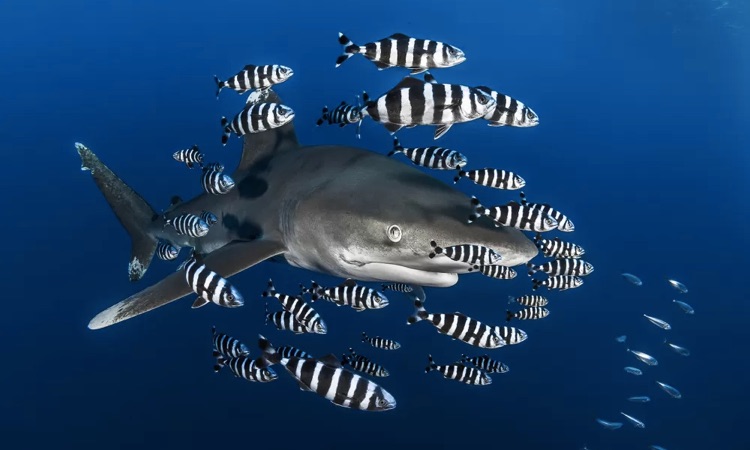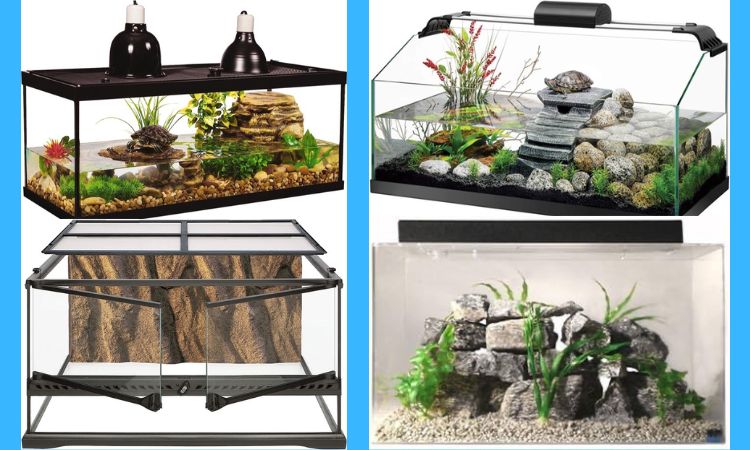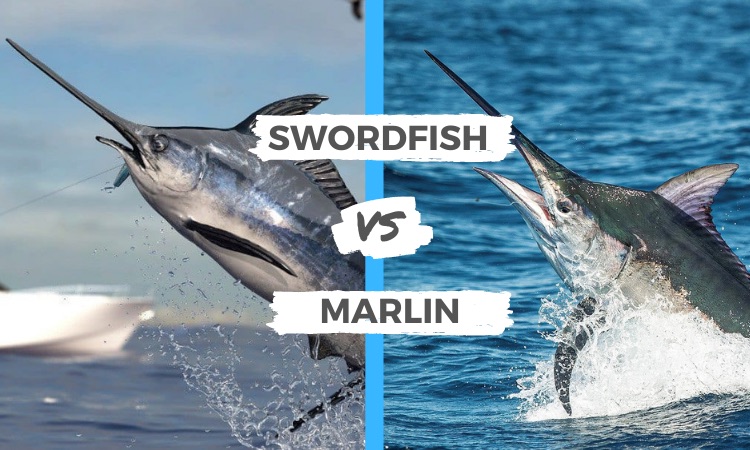White shrimp progress through several life stages in a short amount of time, mature quickly, and typically live for less than a year.
Adults live on soft bottoms from the near shore to depths of a few hundred feet. Unlike many aquatic invertebrates, white shrimp reproduce via internal fertilization. Read on to learn more.
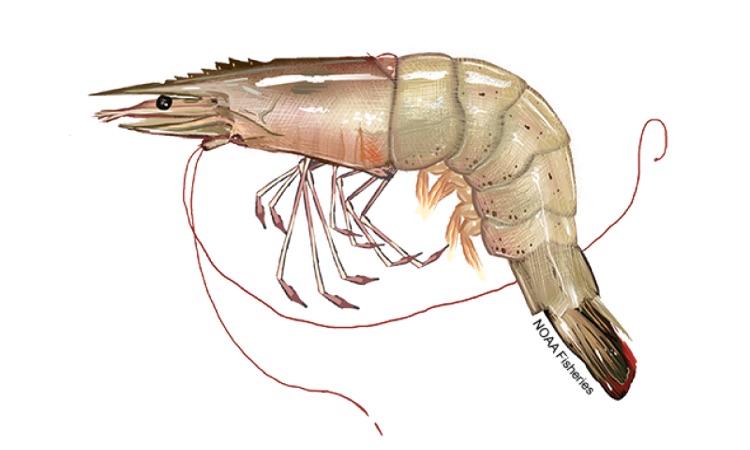
White Shrimp: Quick Facts
- White shrimp are a type of crustacean typically identified by their 10 long, slender legs used for walking, as well as the 5 pairs of swimming legs located on the front side of their abdomen.
- Their carapace is smooth.
- They have a part of their shell which is called a rostrum. The rostrum is well-developed and has teeth that extend to the outer edge of the eyes or even beyond them.
- Their antennae are 2.5 to 3 times longer than their bodies, making them much longer than other shrimp.
Appearance
Atlantic white shrimp are some of the most common prawn species. They get their name from their long antennae and distinct ability to walk, swim, and burrow along any ocean floor they come across. The plant life littered around the ocean provides them with plenty of nutrients to grow rapidly after birth.
Size
Atlantic white shrimp can grow relatively large, sometimes reaching 7 or 8 inches in length as adults. However, their size is largely dependent on the water conditions where they live, such as temperature and composition.
The average length of their antennae is 2.5 to three times the size of their bodies, making them the owner of the longest shrimp species antennae.
Although white shrimp don’t have much sexual dimorphism, females are usually slightly larger than males. When fully grown, an Atlantic white shrimp only weighs one to two ounces.
Coloration
It’s carapace doesn’t have any grooves and it has a toothed rostrum (or beak-like protrusion) that sticks out past the edge of its eyes.
The shrimp has 10 legs on its lower body for walking and 10 more legs on its upper body for swimming, giving it 20 total legs.
This shrimp is named the Atlantic white shrimp, but it’s actually made up of several colors. Its body is white with a light blue tinge. The shrimp’s sides are pale pink, and the legs are black with yellow and green on the edges. They also have some green on their tails and a yellow band along the abdomen.
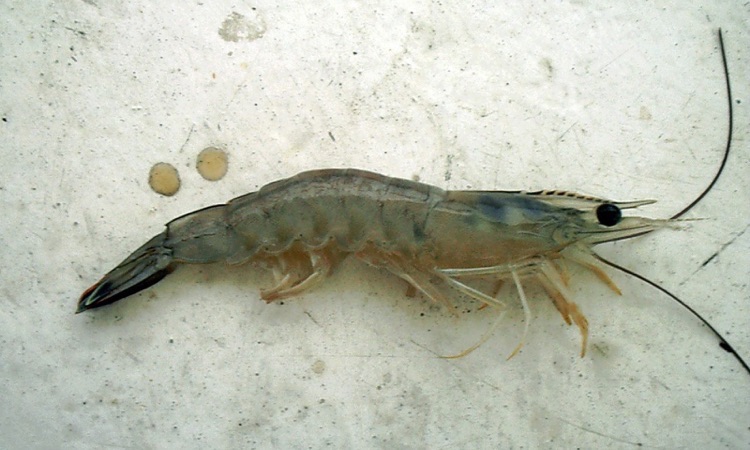
Lifespan
This shrimp typically has a brief lifespan; while it connect live up to two years, most don’t even make it past one. In other words, it’s called an annual crop in agricultural terms. Most shrimp only have a year or less to their name.
Reproduction
The average adult Atlantic white shrimp is 5.5 inches long. These animals begin to reproduce when they reach this size, and the timing of their spawning season depends on how warm the water near the ocean floor becomes each year. For example, Gulf of Mexico shrimp typically spawn between March and September each year.
In North Carolina and other places farther north, the shrimp spawning season is much shorter, lasting only from May to September. To mate, male shrimp attach their sperm to the females. The number of eggs a female shrimp can release varies widely, but it typically ranges from 500,000 to 1 million.
The fertilization process happens when the shrimp are released. If they survive the winter, which is spent in an estuary, they grow rapidly and return to the ocean come spring.
Habitat
The Atlantic white shrimp can survive in frigid waters 37 degrees Fahrenheit and depths up to 90 feet; however, they prefer milder climates and shallow bodies of water. These shrimp also do well in ocean floors with lower salt levels and high quantities of plants and animals.
You’ll find this shrimp in the Atlantic Ocean. They range from New York in the north east of the US all the way down to the Caribbean.
What do White Shrimp Eat?
Atlantic white shrimp eat anything they can fit in their mouths, without being choosy. Additionally, they cannibalize other small animals.
It’s an opportunistic feeder, meaning that it will eat whatever food source is available to it. This includes plants, detritus (decaying organic matter), microorganisms, small fish, and macroinvertebrates (larger invertebrates).
The only time this feeding behavior changes is during the larval stage of development when they are restricted to eating plankton – tiny animals and plants floating near the ocean floor.
Predators
Even though the Atlantic white shrimp is not endangered now, both animals and humans pose a serious threat to its survival.
Human Threats
Many people’s livelihoods depend on the Atlantic white shrimp, as it is one of the most popular types of seafood. Even though it is frequently fished, both the Atlantic coastline and the Gulf of Mexico have regulations to prevent overfishing and threats to the population.
Not only does bottom trawling damage the shrimp’s natural habitat, but it also increases the chance of bycatch. Thus putting other animals like sea turtles, rays, and sharks at risk.
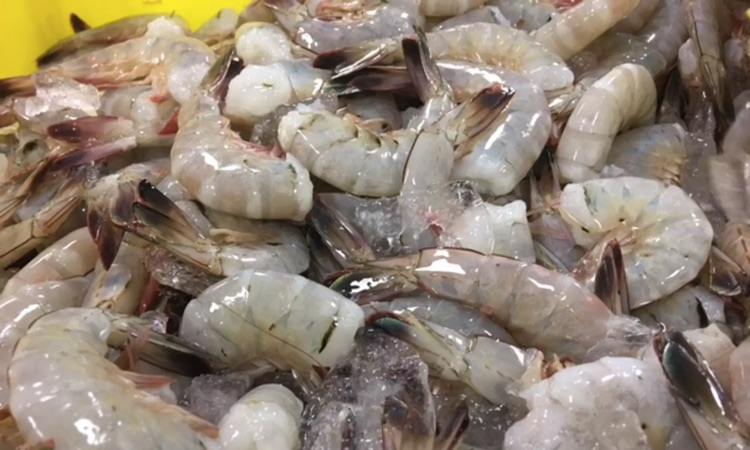
Animal Predators
Many animals feed on the larvae and babies of Atlantic white shrimp, including insect larvae, sheepshead minnows, water boatmen, blue crabs, grass fish, and killifishes.
The adult shrimp is prey for many animals. Many fish will eat them, including other varieties of fish. Even barnacles have been known to feed on shrimp.
Other Threats
Several times during their lives, Atlantic white shrimp molt and grow a new exoskeleton. The old one is shed and for a brief time while the new one hardens, the shrimp has little protection from predators since its exoskeleton isn’t yet rigid.
Conservation Status
It’s currently not in danger of becoming extinct or being classified as threatened or endangered.
The white shrimp is not only a popular seafood but also an essential part of the fishing industry. To prevent overfishing and safeguard their habitat, both the Atlantic and Gulf of Mexico have put laws into effect.
Some of the regulations put in place for fishers include having to get a permit, certain months where fishing isn’t permitted, and required catch levels. Adhering to all the rules is mandatory if they wish to keep their permits.

